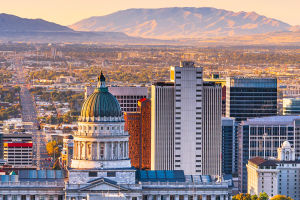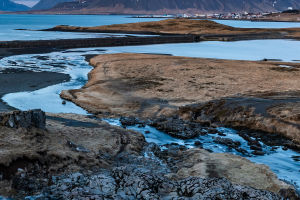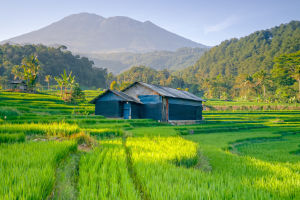Mt. Fuji is one of the most iconic landmarks in Japan, standing proudly as the country's highest peak at 3,776 meters. It has been a source of inspiration for artists and a sacred site for centuries.
Whether you're a nature lover, photographer, or just looking to tick off a must-see destination, Mt. Fuji offers a unique experience.
But before embarking on your journey, it’s essential to know the practical details to make your visit as smooth and enjoyable as possible. From ticket prices to transportation options, here's everything you need to know for your trip.
Ticket Prices and Opening Hours
For those planning to visit Mt. Fuji, there are different costs involved depending on what part of the mountain or surrounding areas you're exploring. The main entrance points to climb Mt. Fuji are called the “5th stations,” and each has an entry fee. For example, the Fujiyoshida 5th Station costs about $7 per person for entry to the trails.
The best time to climb Mt. Fuji is during the official climbing season, which runs from early July to early September. This is when most of the trails are open, and weather conditions are safer. Outside of these months, it’s not recommended to climb due to extreme weather conditions, and only some areas are accessible.
For those just wishing to visit the Fuji Five Lakes area or sightseeing, there is no entry fee. However, access to some attractions or parks, like the Fuji Subaru Line 5th Station, may cost around $15 for a bus ride.
The main sightseeing attractions around Mt. Fuji, such as the Chureito Pagoda and the Fuji Five Lakes, are open year-round, with the best visiting hours being between 8 AM to 5 PM. Always check ahead as some areas may close earlier during off-peak months.
Transportation: How to Get to Mt. Fuji
Getting to Mt. Fuji is easier than it may seem, and there are several transportation options to choose from.
From Tokyo by Train: If you're traveling from Tokyo, the most convenient route is to take the JR Chuo Line from Tokyo Station to Otsuki Station, which takes about 1.5 hours. From there, transfer to the Fujikyu Railway and ride to the Kawaguchiko Station (another 50 minutes). Once at Kawaguchiko, you can take a bus to the Fuji Subaru Line 5th Station or other nearby tourist attractions.
By Bus: Highway buses are another popular choice. There are buses that leave from major stations in Tokyo (Shinjuku Station, Shibuya Station, or Tokyo Station) to Mt. Fuji, and the journey usually takes about 2.5 to 3 hours. Prices typically range from $15 to $25, depending on the departure point.
Car Rental: For greater flexibility, renting a car is a great option. There are several car rental outlets in Tokyo and other cities near Mt. Fuji. A rental car will give you access to more remote areas, such as the hidden hiking trails or scenic viewpoints around the mountain.
The Best Time to Visit Mt. Fuji
Timing your visit to Mt. Fuji is crucial for having the best experience.
Climbing Season (July to September): This is the only time when the majority of the hiking routes are open, and the weather is more stable. If you're planning to climb to the summit, this is the best time to do so. The trails can get crowded during peak season, so be prepared for company on your hike.
Spring (April to June): Spring is a beautiful time to visit Mt. Fuji as the cherry blossoms around the base of the mountain bloom, creating a picturesque landscape. The weather is milder, and it's a perfect time for sightseeing.
Autumn (October to November): If you prefer cooler weather and fewer crowds, autumn is an excellent time to visit. The fall foliage surrounding the mountain is stunning, and the crisp air makes for comfortable hikes.
Winter (December to February): Winter visits are mostly for those who want to see the mountain covered in snow. While the mountain itself is closed for climbing, the surrounding areas are quiet, and the views can be breathtaking.
What to Pack for Your Mt. Fuji Trip
Packing appropriately for your Mt. Fuji trip is essential, especially if you're planning to climb.
For Hiking: Sturdy, waterproof hiking boots are a must. Bring layers of clothing, as temperatures can vary drastically as you ascend. A windbreaker or jacket is recommended, and don't forget sunscreen and sunglasses to protect from UV rays at higher altitudes. Also, pack snacks and plenty of water, as there aren't many places to buy supplies once you're on the mountain.
For Sightseeing: If you're not hiking, pack comfortable walking shoes, light clothing, sunscreen, and a camera. You might also want to bring a hat and light jacket for cooler mornings or evenings.
For Winter Visitors: If you're visiting in winter, it's advisable to pack heavier clothing, including thermal layers, gloves, and a warm hat. Keep in mind that snow can make temperatures feel much colder than expected.
Practical Tips for Your Mt. Fuji Trip
1. Altitude Sickness: The higher you go, the thinner the air becomes, and altitude sickness can affect climbers. It’s recommended to take breaks, drink water regularly, and acclimate your body as you ascend. If you're feeling unwell, don't hesitate to descend to lower altitudes.
2. Mountain Huts: If you plan on climbing Mt. Fuji overnight, you can stay in mountain huts along the climbing route. These huts typically cost around $35 to $75 per person and provide a place to rest, eat, and sleep. Booking in advance is highly recommended.
3. Weather Considerations: Always check the weather forecast before heading up, as conditions can change rapidly. In case of storms or heavy rain, it's best to postpone your hike or visit.
4. Respect the Environment: Mt. Fuji is a sacred site, so it's important to respect the environment. Follow designated trails, avoid littering, and be mindful of your surroundings.
Make Your Mt. Fuji Trip Unforgettable
Mt. Fuji is truly a must-see destination, offering an unforgettable experience with its stunning landscapes, cultural importance, and variety of activities. From hiking to leisurely sightseeing, it’s a place that promises beauty and adventure at every turn. By knowing the best times to visit, how to get there, and what to pack, you’ll be well-prepared to enjoy everything this iconic mountain has to offer. Let’s embrace the spirit of adventure and create memories that will last a lifetime! Safe travels, Lykkers!


